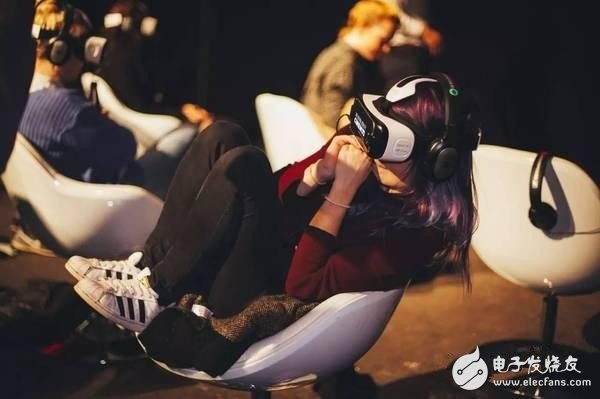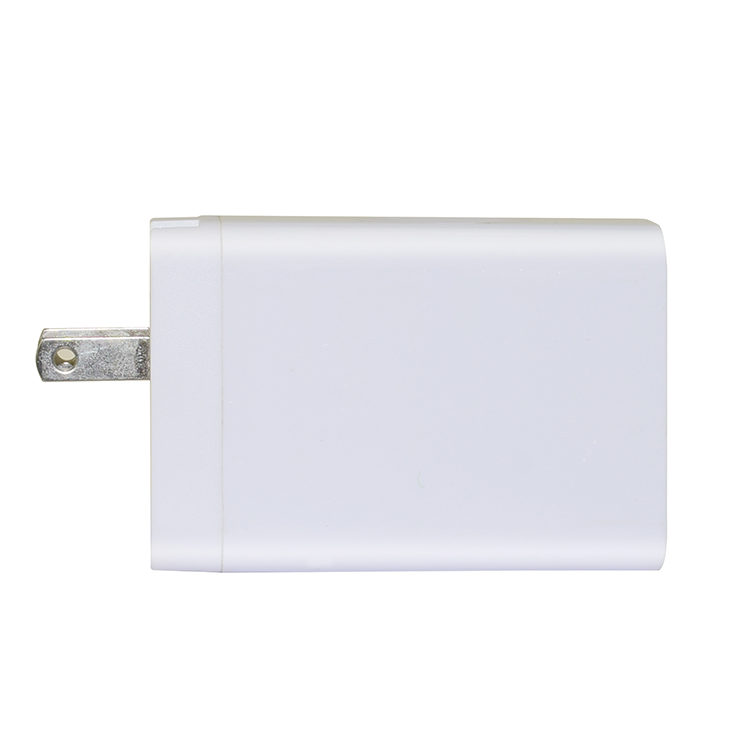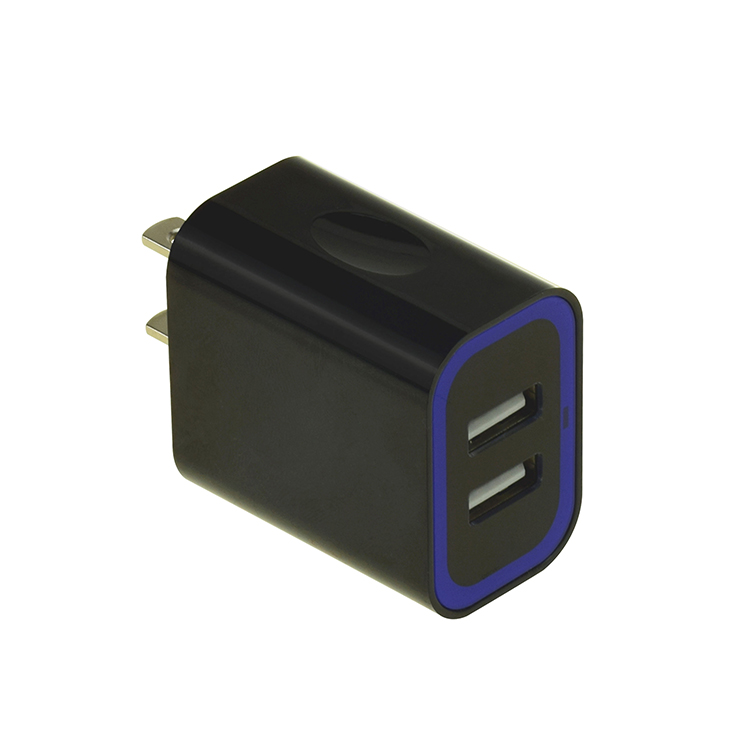In the 1960s, which experienced the exploration, in the hot 80s, after the quiet 90s, VR ushered in a new round of climax in the past two years, Facebook, Google, Shunwang, Cheitu Technology, Meifang Yunke, Audi, A large number of technology Internet companies and traditional enterprises such as LeTV poured into VR from all directions, and the capital market was also full of strength and began to fight. However, behind the hustle and bustle, it seems to have entered a dormant period. For example, in the Google search, the word "VR" in the top three in the technology field was once squeezed out of the top 10; Zuckerberg spent $2 billion to acquire virtual reality. Oculus Rift manufacturer Oculus has been blaming Fang Fang, but in a recent interview, he released a bit of regret about the acquisition of Oculus VR. Even more chilling is probably the shipment, even the three major factories Oculus, HTC Vive, Sony PSVR, the sales data is also intimidating. Before the geek park, a set of speculative data was cited: Oculus plans to ship about 1 million units this year, HTC Vive is about 400,000 units, and Sony PSVR is about 1.5 million units. However, data from Steam shows that the user growth of HTC Vive has almost stagnated in August, and the current shipments are about 100,000 units, far below expectations.

In fact, it is precisely this group of enthusiasm for VR to fall into such an embarrassing situation. They are taking the VR to the runway. What is wrong with it?
First, mistaken business logic: VR + vertical industry is only a false proposition, vertical industry + VR is the right way
Now, all walks of life do not talk about VR seems to have become a non-influent performance, VR + shopping, VR + education, VR + car, VR + live, VR + games, VR + real estate, VR + travel, VR + adult content, VR + gaming. . . . . . All-inclusive, no wonder, and this is the result of excessive hype, the industry bubble is beginning to see. There are three reasons:
1. VR has not yet developed to the point where every industry adapts, especially the format with strong experience and strong social attributes, such as tourism, retail shopping, etc. If you think about it, you don’t have to go to Egypt to see the pyramids again. Huangguoshu looks at the waterfall and sits at home with VR. Is tourism or tourism? The multi-dimensional feelings of visual, auditory, olfactory and even tactile sensations brought by tourist attractions are VR that cannot be accurately simulated for the time being. This immersion is not immersive. The purpose of tourism is not to “integrate into it, to integrate people, to integrate body and mind. "If it is just a visual restoration, I am afraid it is still difficult to completely replace it." In addition, the “retail industryâ€, which also relies on the on-site experience, has similar problems. In March of this year, Alibaba announced the establishment of a VR lab, and it was rarely asked to rely on VR technology to fully launch the “Buy+†program. You should know that shopping is not just a trial dressing, try-up experience, but also a social behavior in which you talk in groups of three to five. Even if VR can do visual presentation, it can't help socially. If you can add social attributes and improve the communication mechanism between people, it may be really eye-catching. At least girls can go shopping at home with friends. .
2, VR due to content, technology, price and other restrictions, hard to move and can not enhance the competitiveness of the industry. For example, in May this year, HTC and Shunwang Technology jointly created the VR Internet cafe market response is extremely general, not only because the content is still in the video, playing game demo level, the charging standard is as high as 200 yuan / hour, at this time VR is pure An empty girl. At the same time, VR game experience areas have appeared in major shopping malls all over the country, commonly known as “egg chairsâ€. The advanced ones will set up an independent experience space. However, no matter how the form changes, the lack of content is always the shackles of VR entertainment industry. A handful of small games can't help but hurt. It's no wonder that many consumers have said that they will never go to the second time after playing once.
3. An important reason for the proliferation of “VR+Vertical Industry†is that it has no core competitiveness. It can only rely on scene overlays to repeat stories, especially those solution providers that seem invincible and can't wait to provide industry-wide services. Room, a VR aerial photography to see the sights, and occasionally pick up some small jobs in the automotive industry from the advertising company, do VR to see the car, can not solve the fundamental problem. VR has become the essential oil in their hands, and finally it is just a tool for storytelling money, or as Chen Yuxing, founder of Autoforce, said: “Vertical industry VR solutions must be the dual art of vision + data, the foundation It is industry experience and industry resources. It must start from the vertical industry and solve problems for the industry, not for VR and VR. VR is just a tool.†It is true that different vertical fields have specializations and do not understand the real needs of the industry. The experience of the solution provider and the basics can not be guaranteed, and it is impossible to solve the problem.
Only by truly understanding the industry, starting from the pain point of the industry and taking the industry as the core, it is possible to serve VR as a solution and to complete the commercial transformation. Taking the automobile industry as an example, the main pain points of the domestic automobile industry are: high research and development costs, high sales costs, large sales uncertainty factors, limited sales radius, and cumbersome user test experience. In general, the crux lies in the “scenarioâ€. Therefore, major auto manufacturers have combined their VR technology to carry out upgrades and specific transformations according to their own needs. For example, in research and development, Ford Motor has launched the FIVE lab, and Audi has launched a “virtual assembly line inspection†technology; For the pre-sales experience and test drive of high-end models (such as super-running), in order to enhance sales and enhance sales, Audi and Pagani and HTC VIVE launched a PC-based virtual reality car selection service based on offline dealerships; For the marketing and sales of passenger cars, China's Chess Technology has independently developed a VR digital sales platform VRAUTO based on mobile + PC dual platform, providing a set of VRAUTO CREATIVES for models such as Highlander and Magotan. VRAUTO KIT car sales kits (Creative Content), VRAUTO DEALER (virtual dealership), VRAUTO SALES (sales promotion system) and VRAUTO SUPPORT (after-sales support system and others) help manufacturers and dealers build their true meaning Online virtual dealership, online real-world real-time store display, using VR+SaaS car sales auxiliary platform We were car shopping guide and sales, both to help consumers better at home to watch the car test, letting the dealership selling cars extension off sales anytime, anywhere. In the car training phase, to improve safety and flexibility, the “Driving School†app helps people in virtual reality to test whether they are a good driver who can resist interference and concentrate on driving.
Therefore, VR is only a solution to the problem, a technical tool, do not think that VR plus any industry is all right, only in the vertical industry to adapt to local conditions can be 1+1 "2.
Second, the wrong direction of the market: the pan-entertainment consumer class is pit, the enterprise level has great
At present, almost all VR applications that directly target consumers such as games, video and audio have been planted. Former Sina co-president and CTO Xu Liangjie said that there were more than 200 companies doing VR helmets in China in 2014. There were only 60 companies left in 2015, and some will die in 2016. This over 70% mortality rate is in the description: the consumer (TO C) market is a magnificent big pit. the reason is simple:
1. The consumer-grade market has amplified its true purchase intention and conversion effectiveness based on the fresh and fiery consumption performance. Even if most people are not willing to admit it, the fundamental reason for promoting the development of pan-entertainment formats such as VR games or movies is not the original product design, but the freshness of people. It’s just a cruel reality that tells us that after they have experienced it once or twice, they have entered a vicious circle: user churn → investors pay attention to reduce → industry chain manufacturers are unsustainable → users lose hope for VR → users continue to lose, eventually Always sever the relationship with VR, let alone continuous purchase and loyalty.
2, the content production power is uneven, the bad experience does make the consumer users discouraged, and directly hit their attention to VR. Even the VR live broadcasts led by stars and net red are too single for users to spit out content, often black screens, etc. (Liuyan VR live show held before the peppers), let alone other scenes.
3. The maturity of the consumer market takes time, and there are also many uncertain factors that limit its development. Although consumer-grade applications such as VR+ games, video, and sports seem to be expected to be large in scale, the richness of content and the maturity of technology will take time and not one or two producers can solve it. The main investment direction is Du Chengjun, the president of the VC agency of film and television. He said: "Because there is no business model in the C-side, the film will mainly be oriented to the B-side project."
Conversely, the enterprise-level market (TOB) is a gold mine:
1. The enterprise-level market pressure is relatively small and the living space is large. Consumers in the consumer market are everywhere. Everyone says that they want to be a platform. Small and medium-sized entrepreneurs are either crushed by BAT, Xiaomi, LeTV and other giants, or they are being compiled. It is difficult to have independent development opportunities, and they are mostly playing heavy capital games. Every move is completely exposed, and the time and scale are spelled. The enterprise-level market has certain industry barriers, especially those involving military, education, medical, and automotive services. The external exposure is small, and there are fewer competitors. For example, the domestic focus is on the vehicle VR digital sales solution. Technology (Autoforce), a VR real estate sales solution, is also a temporary venture for the company. The VR technology company facing the enterprise market relies on their own industry resources, deep industry understanding and technical solutions that are highly compatible with the industry. The idea is that the capital can still live very moist in the cold winter, and it is not worth eating and wearing. Therefore, small and medium-sized entrepreneurs are likely to become experts in a certain field as long as they have formed core competitiveness in a certain segmentation field, thus occupying the initiative in the industry competition.
2. The profit of the enterprise market is clearer. Looking at it now, in the real estate, automotive, education, medical and other industries, the "VR+" business model has gradually become
2. The profit of the enterprise market is clearer. At the moment, in the real estate, automotive, education, medical and other industries, the business model of “VR+†has gradually matured. For example, the content can be sold to the hardware manufacturer for the built-in, and the license fee is charged; the offline experience store can be customized. The content, charge authorization fee or sales share; can do application content development for real estate, home improvement, education, tourism and other industries; also can do VR commercials for advertisers. Most VR companies in the consumer-grade market, especially hardware and content companies, will still not see the possibility of self-hematopoiesl, and even the most valued Lanting figures have stopped all C-side businesses. In turn, develop content for the B side.
3. Enterprise-level market customers are more tolerant of VR than consumer-market users. Consumer-level market users are more concerned about the details. This requires extremely high technical and visual presentation of VR, while enterprise-level market customers are more concerned about conversion and users. Care about change. For a simple example, a VR game may be rejected by consumers because it is not smooth, but if it is a VR medical device, it only reduces the user's pain and improves the treatment effect, even if it does not reach the ideal state. It is also much better than the original, users and customers are willing to accept.
USB Wall Charger is 1-port to 4-port USB Charger with EU plug, US plug, UK plug and AUS plug for choose. Yidashun offer multiple usb wall charger, usb type c wall charger, qualcomm quick charger 3.0 and qualcomm quick 2.0 charger, which can charge your mobile phone and tablets fast. And they are very small and light, which is easy to take for travel use.


USB Wall Charger,Iphone USB Wall Charger,Portable USB Wall Charger,Micro USB Wall Charger
Shenzhen Yidashun Technology Co., Ltd. , https://www.ydsadapter.com